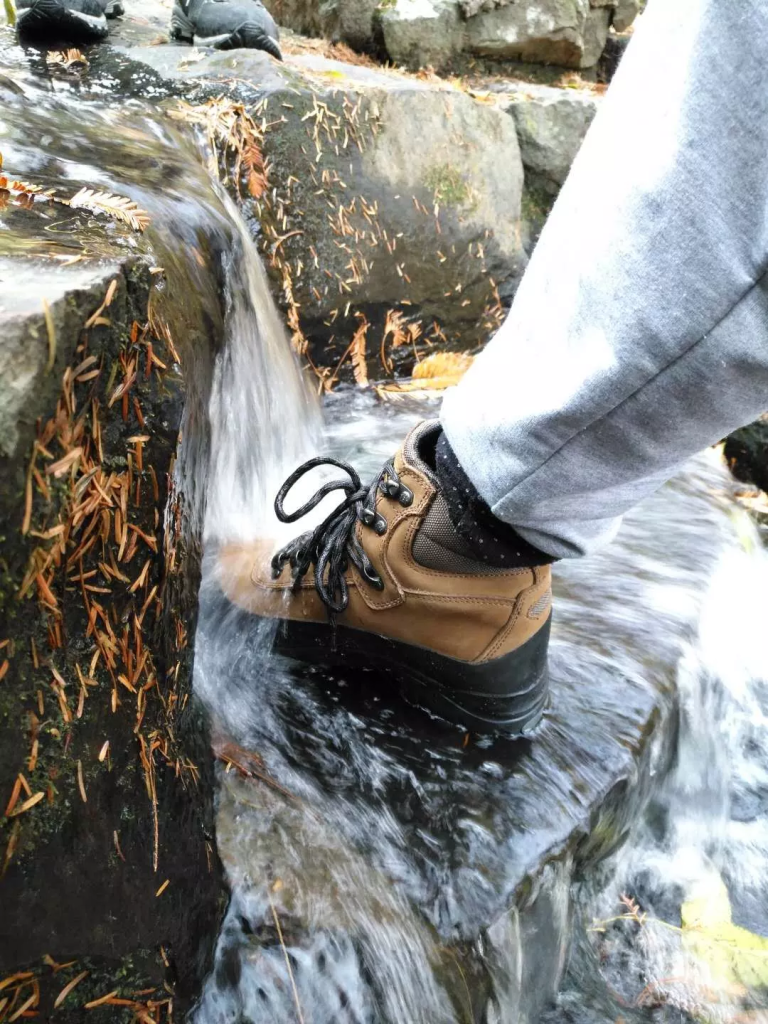Hiking shoes
Hiking shoes are one of the three most important pieces of hiking equipment. They protect our feet and accompany us all over the world. So choosing the right pair of hiking shoes is half of a successful hike.
A pair of standard hiking shoes can protect you in complex outdoor environments.

So how to choose hiking shoes?
① Choose shoes with clear sole patterns, which can prevent slipping when hiking.
② The toe of the hiking shoes should be upturned, and there should be strong and reinforced anti-collision plates at the front and back to protect the toes and heels.
③ Choose water-repellent fabrics. When going out for hiking, you usually go early, and the kiss of dew is inevitable. When the dew falls, it will slide down instantly.
④ Lightweight hiking shoes can reduce the weight of your feet when hiking, making hiking easier.
Backpack
A backpack is one of the most important pieces of equipment during hiking, and it can effectively carry all of our equipment.
A suitable backpack can help reduce fatigue and risk during hiking, and also allow us to fully experience the charm of the wilderness.

So how do you choose a suitable hiking backpack?
① Strong and durable fabric. For example, nylon is extremely durable and thin, so you don’t have to worry about encountering some thorns when hiking.
② Carrying system. The carrying system includes shoulder straps, frames, waist pads, belts, backboards and related straps, which can transfer as much effective weight of the backpack as possible to the waist, and reasonably distribute the remaining weight to the shoulders and back to avoid concentrated force in one place.
③ Rain cover. The backpack has a built-in rain cover, which is detachable, waterproof and moisture-proof, ready to cope with the changing outdoor environment at any time.
Trekking poles
Trekking poles bring more than just convenience during hiking, they also provide safety. Trekking poles can not only help your feet and reduce knee injuries, but also help you find your way and avoid some outdoor dangers.

Trekking poles are so easy to use, so how do you choose the right one?
① Wrist strap: It is best to be soft and have some elasticity. It can be easily adjusted to the required firmness and is not easy to fall off.
② Handle: The size and shape should fit your hand, whether wearing gloves or not.
③ Handle material: The material of the handle should make it easy for you to grasp.
Trekking poles with cork and foam plastic handles are usually the first choice for people who sweat easily in their palms or often hike in rainy days, because these materials have better friction even when wet.
The handle made of rubber material is slippery at times, but it feels good. Handles made of plastic and wood are usually slippery and don’t feel particularly good, but they are durable and strong.
④ Length: The more adjustable your trekking pole is, the more benefits it will bring you. When going down the mountain, it should be longer; when going up the mountain, it should be shorter; when not in use, it can be retracted shorter and can be tied to your backpack conveniently.
Quick-drying T-shirt
When hiking, wearing a quick-drying T-shirt inside can effectively transfer sweat to the clothes, and evaporate the sweat through circulating air, so that the body is no longer sticky.

Compass
When you are outdoors, carrying a compass can effectively help you identify the direction and get rid of the embarrassing situation of getting lost.
Knives
A sharp and versatile military knife is the first choice for hiking. Its saw and knife may be the most frequently used in the outdoors. And the knife may sometimes be used in conjunction with medicine, such as when you are bitten by a snake. If possible, it would be more reassuring to have a larger dagger.

Whistle
When traveling in a group, a whistle is an effective tool for communicating with companions; when traveling alone, a whistle can save lives in an emergency.
The whole team should have a unified whistle tone regulation and understand some necessary communication methods, such as two long beeps to indicate an emergency.
Water bottle
Bring a water bottle when hiking outdoors, which is convenient and environmentally friendly. When you are thirsty during hiking, drink a sip of warm water to reduce your fatigue and make your body more comfortable.

Headlamp
A headlamp is more convenient than a flashlight. It can free your hands to do other things when you need to illuminate the dark night.
First aid kit
When hiking, unexpected situations may occur. Then you need to be prepared and bring common medicines (cold medicine, anti-inflammatory medicine, sunscreen, hemostatic bandages, Band-Aids, vitamin pills, etc.) to make yourself feel more at ease.
Equipment is directly related to our hiking experience. If possible, choose the most comfortable equipment for yourself!
